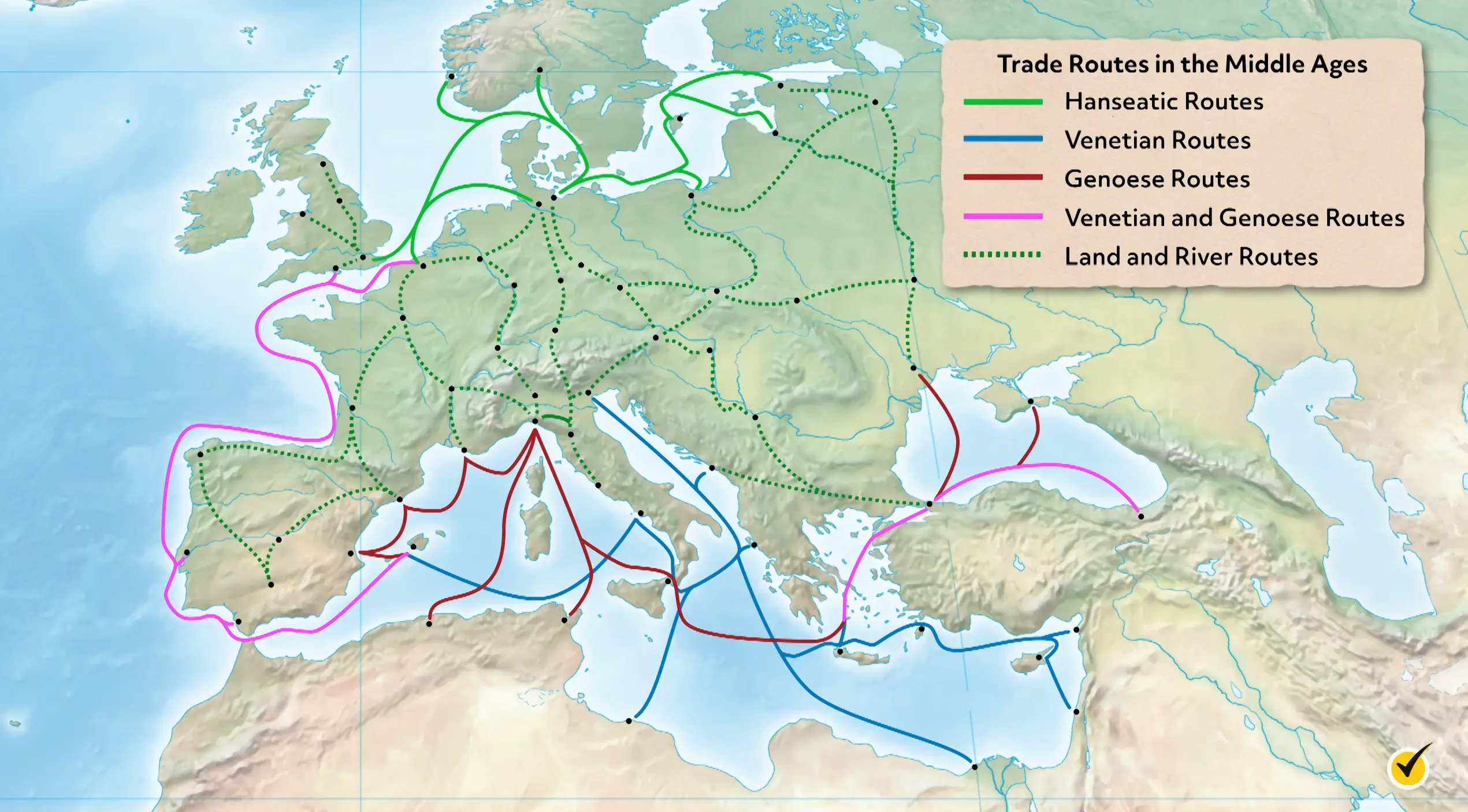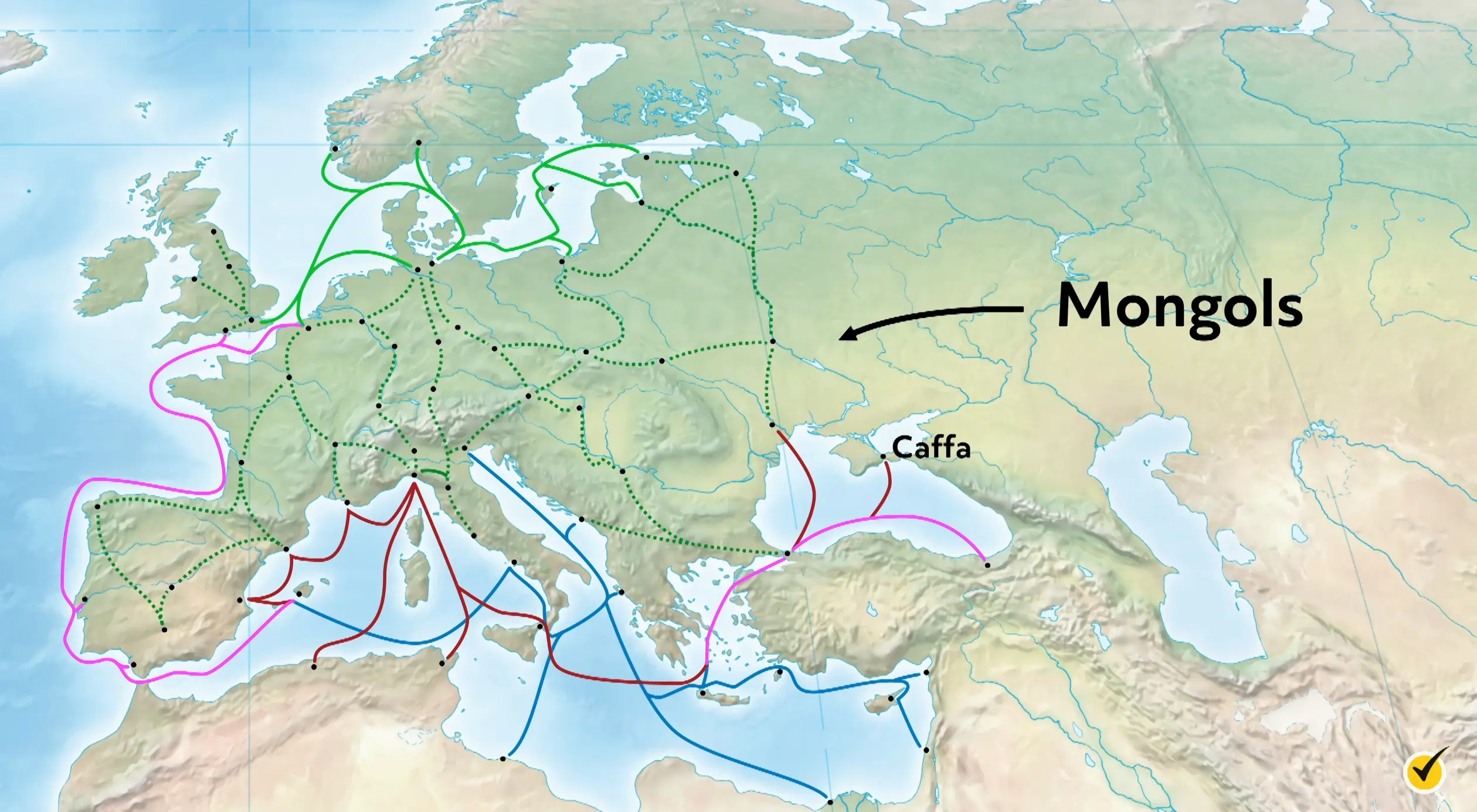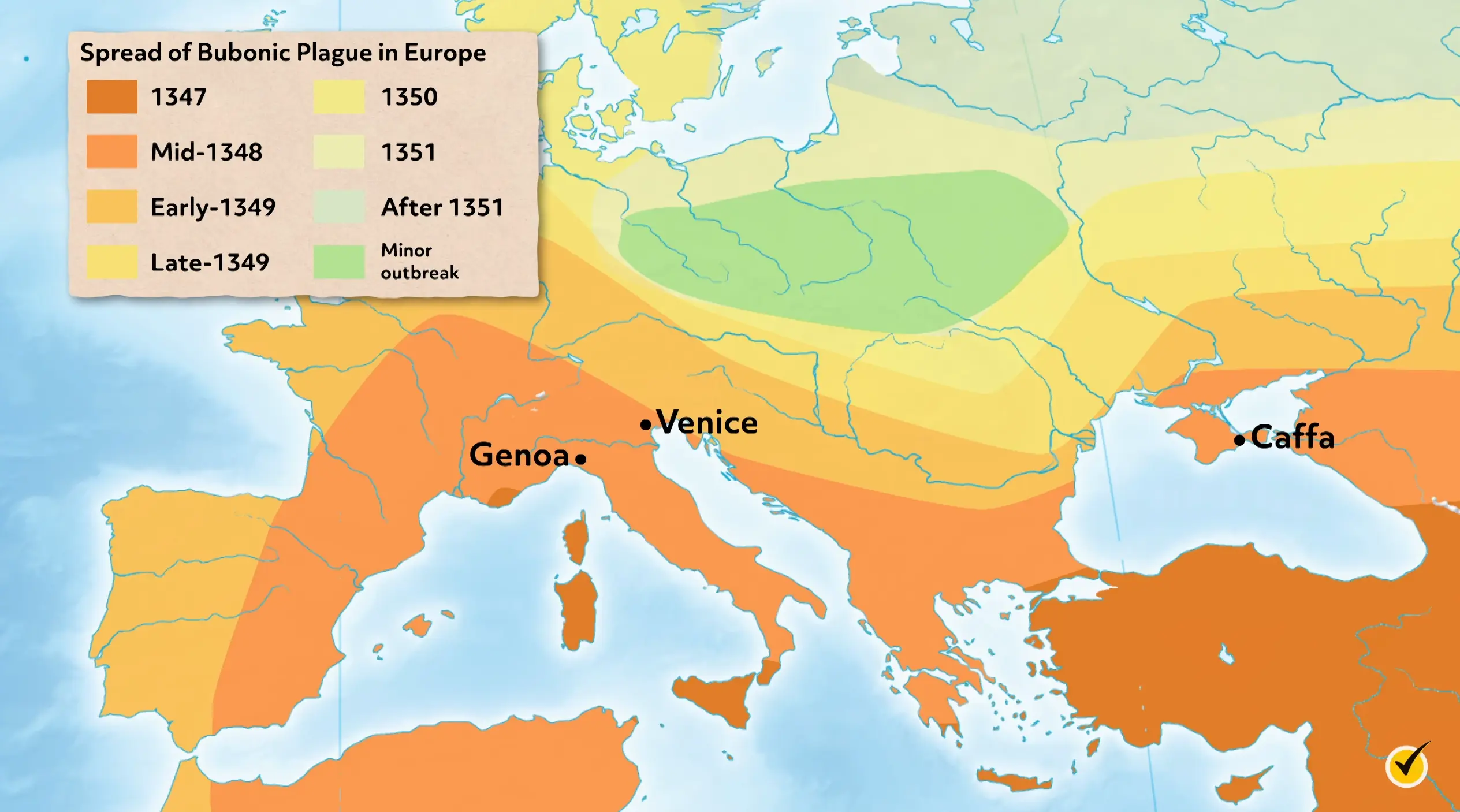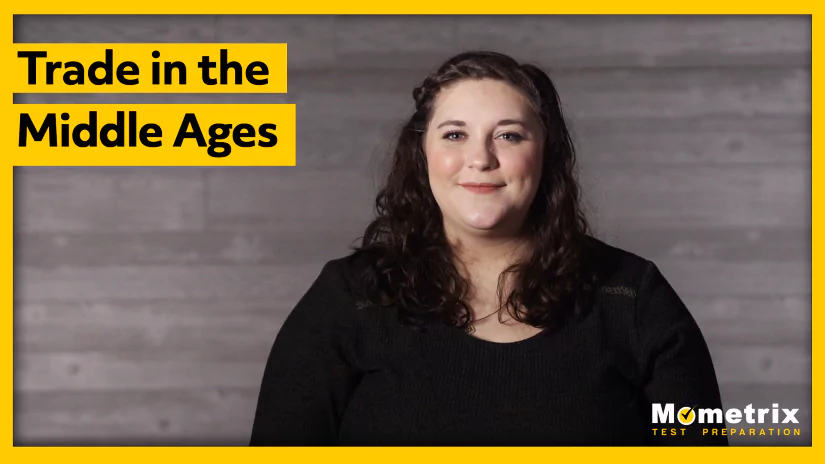
Hi, and welcome to this video on trade during the Middle Ages! Today, we’ll be looking at the rising importance of trade during this time and how its growth contributed to one of the most devastating pandemics in human history.
Post-Roman Economic Challenges
With the collapse of Roman authority in 476 AD, trade prospects and the economy were initially bleak as the continent entered the Middle Ages. Western Europe was a patchwork of many feudal landlords and weak monarchs trying to scrape in money wherever they could. The Roman roads were in a state of awful decline, and merchants were subjected to all sorts of taxes and fines by the feudal landowners whose territories they traveled through.
The early 12th century saw the beginnings of many significant improvements, including roads and the security of those roads. By the 13th century, canals and advanced ships were also in the picture. This led to reduced transport time, increased cargo capacity, more secure transport, and reduced costs overall.
In addition, Europeans began taking active measures to defend their coasts from pirates, and to guide their trade ships, by installing lighthouses at strategic points. Another important change was the new demographics brought about by innovations in agricultural technology. Around 1000 AD, European farmers adopted the moldboard plow and the heavy plow, which helped break through the heavy clay soils in the North and enhanced soil fertility. The innovations of the horse collar and the horseshoe made horses go-to animals for the transportation of goods. Farmers could cultivate fields more extensively and transport their produce to market quicker than they had previously with sluggish oxen.
The effects of these relatively simple advances, combined with high crop yields from the Medieval Warm Period, were revolutionary. Farmers had more leisure time, larger areas of land were under cultivation, and there was now an abundance of produce from the fields. All of this led to more income to support families, which resulted in a Western-European population boom. As populations grew, there was a large and fast moving expansion of cities that continued all the way into the early 14th century.
Medieval Trade Developments
Many people in the feudal system now had so much extra produce on hand, they could use it to trade for the goods that they didn’t produce. Medieval Europeans began trading frequently at local markets and at the larger and less-frequent fairs held in towns and cities. These were both organized with the approval of local councilmen and church officials, who in turn fostered a growing trade-based economy.
The trade fairs had become highly popular by the 13th century, because they offered considerably more variety and volume of buyable goods than people could find in their local markets. They also made a lot of money for the monarchs who licensed the rights to hold them, which meant that some monarchs began sending out protection for the merchants on their journeys to and from the fairs.
Thanks to military and political developments of the time, Europeans gained expanded access to markets in North Africa and the Near East, which had been under the sway of Muslim caliphs since the latter part of the 7th century. The center of these developments was the launch of the Crusades, which saw European-Christian knights conquer Palestine and the surrounding lands by the early 12th century AD. In the process, Western Europeans enlarged their trading networks, tapping into the goods that came to the Near East from Africa and Asia.

Trade fueled the rise to power of Italian city-states including Venice, Pisa, and Genoa, all of which had been trading with Byzantine and Muslim merchants before the Crusades. As the Crusades began to take place, they swiftly supplied transports, soldiers, and battleships for the Crusaders, which gained them trading areas of their own in Crusader cities in the Near East. In the process, they became even more successful trading powerhouses connecting Western and Eastern markets. From the Italian trading hubs, the goods from the East would then be traded across the rest of Europe, through a vast array of trade routes that had come together by the Late Middle Ages.
Guilds and Merchant Power
European merchants began leveraging their new trade profits to protect themselves from covetous nobles and monarchs. The process began with the rise of medieval guilds for mutual protection against the taxes set upon them by their feudal overlords. The process continued as guilds in different cities united to protect their trade with each other.
A defining development in this regard was the establishment of the Hanseatic League, which, in the late 12th century AD, pooled its resources in a fleet for mutual protection of trade between their various ports. Merchant guilds began cropping up across Western Europe, using their economic power to win political power.
In Italy, merchant guilds were quite prominent, and Italian merchants soon banded together to take control of the governments of the powerful city-states in Venice, Pisa, Genoa, and Florence. In these Italian republics, merchants and bankers formed their own judicial systems to enforce contracts and raised their own armies to enforce their trading privileges. Port cities that rose to prominence on trade sent merchants to convince foreign traders to do business with them. By the early 1200s, German traders were operating in Venice, and in Genoa, government officials were emerging to protect the rights of merchants.
Mongol Influence and the Black Death
Meanwhile, to the east, Genghis Khan was building his vast Asian empire. As his armies pushed west, they eventually reached the geographic area where the Italian merchants traded. Genghis eventually died and the Genoese pressed for access to Mongol markets. They wrote a trade deal with one of the Mongol political factions and established a Genoese trading post at Caffa, in modern day Turkey. This post became an important trading link between Europe and the East.
Relations between the Genoese and Mongols were rocky though, as the Genoese began trading slaves through Caffa, which angered the Mongol leader Toqta who burned the city to the ground and expelled the Genoese in 1307. By the 1340s, the Genoese were re-established in the city, but fresh disputes arose, resulting in a Mongol siege of the city in 1343. In the cramped conditions of that siege, however, an outbreak of bubonic plague swept through the entire Mongol army, decimating the ranks.

Urged by desperation, the armies’ leader Jani Beg collected heaps of dead corpses and flung them into Caffa, where they rapidly infected the city’s population with the plague. Some sailors escaped, but they too were infected, and as they traveled on ships to Genoa, Venice, and other European ports, they began the spread of what would become known as the Black Death. The plague spread throughout Europe, wiping out roughly half of Europe’s population between 1347 and 1351. As you can imagine, this put quite the gruesome end to Europe’s period of growth, creating a recession that would last for the next century.

Okay, now that we’ve covered everything, let’s look at a review question before we go:
Review Question
Which of the following was not a cause of the growth of European trade during the Middle Ages?
- The introduction of the heavy plow and the horse collar
- A population boom that began around 1000 AD
- European territorial conquests of the Crusades
- The Mongol siege of the Genoese trading port of Caffa
The siege of the Genoese trading port in Caffa was a result of the growing trade, not a cause of it.
I hope this review was helpful! Thanks for watching, and happy studying!
- Cartwright, Mark. 2019. “Trade in Medieval Europe.” Ancient History Encyclopedia
- “Middle Ages.” 2022. Wikipedia
- “Medieval Warm Period.” Wikipedia.
- “Agriculture in the Middle Ages.” 2023. Wikipedia
- Cartwright, Mark. 2019. “Trade in Medieval Europe.” Ancient History Encyclopedia
- “Crusades.” Wikipedia
- Cartwright, Mark. 2019. “Trade in Medieval Europe.” Ancient History Encyclopedia
- “Hanseatic League.” n.d. Ancient History Encyclopedia
- Cartwright, Mark. 2018. “Medieval Guilds.” Ancient History Encyclopedia
- Redd, Wyatt. 2017. “14th Century Mongols Spread Death and Terror through Biological Warfare.”
- Micheal Chimaobi Kalu. 2018. “Birth of the Black Plague: The Mongol Siege on Caffa.” WAR HISTORY ONLINE
- “Black Death | Causes, Facts, and Consequences.” n.d. Encyclopedia Britannica
by Mometrix Test Preparation | Last Updated: December 5, 2025

